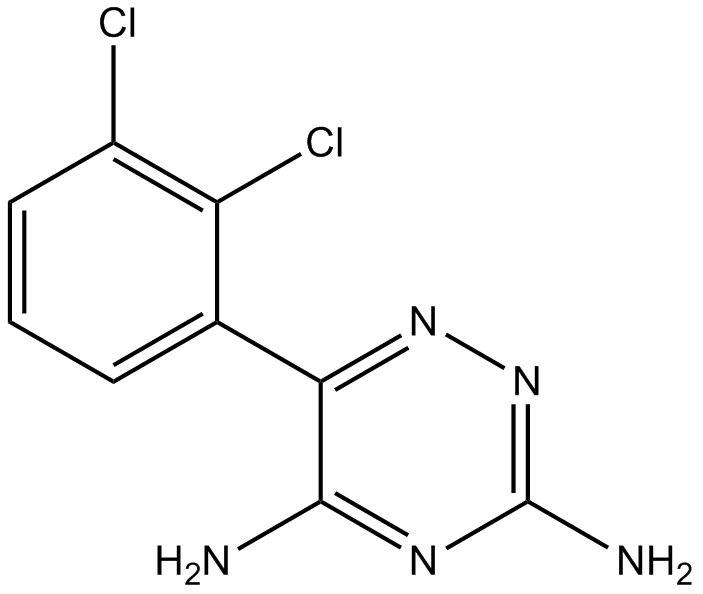Lamotrigine (Synonyms: BW 430C, LTG) |
| Katalog-Nr.GC14764 |
Lamotrigin (BW430C) ist ein starkes und oral wirksames Antikonvulsivum oder Antiepileptikum.
Products are for research use only. Not for human use. We do not sell to patients.

Cas No.: 84057-84-1
Sample solution is provided at 25 µL, 10mM.
Lamotrigine(BW430C) is a novel anticonvulsant drug for inhibition of 5-HT and sodium channelTarget: Sodium ChannelLamotrigine stabilises presynaptic neuronal membranes by blockade of voltage-dependent sodium channels, thus preventing the release of excitatory neurotransmitters, particularly glutamate and aspartate [1]. In rat cerebral cortex tissue incubated with veratrine 10 mg/L, lamotrigine is twice as potent in inhibiting the release of glutamate and aspartate (ED 50 = 5.38 mg/L for each) than the release of GABA (ED50 = 11.2 mg/L), and is much less potent in inhibiting acetylcholine release (ED50 = 25.6 mg/L) when cortical slices is exposed to veratrine 75 mg/L. Basal glutamate release is unaffected [2]. Lamotrigine inhibits high-frequency sustained repetitive firing of sodium-dependent action potentials, indicating a direct effect on voltage-activated sodium channels [3]. Lamotrigine (Lamictal), a phenyltriazine derivative, is a well established anticonvulsant agent that has shown efficacy in the prevention of mood episodes in adult patients with bipolar I disorder. lamotrigine significantly delayed time to intervention for a depressive episode and showed limited efficacy in delaying time to intervention for a manic/hypomanic episode, compared with placebo. Lamotrigine is generally well tolerated [4].
References:
[1]. Goa, K.L., S.R. Ross, and P. Chrisp, Lamotrigine. A review of its pharmacological properties and clinical efficacy in epilepsy. Drugs, 1993. 46(1): p. 152-76.
[2]. Leach, M.J., C.M. Marden, and A.A. Miller, Pharmacological studies on lamotrigine, a novel potential antiepileptic drug: II. Neurochemical studies on the mechanism of action. Epilepsia, 1986. 27(5): p. 490-7.
[3]. Cheung, H., D. Kamp, and E. Harris, An in vitro investigation of the action of lamotrigine on neuronal voltage-activated sodium channels. Epilepsy Res, 1992. 13(2): p. 107-12.
[4]. Goldsmith, D.R., et al., Lamotrigine: a review of its use in bipolar disorder. Drugs, 2003. 63(19): p. 2029-50.
Average Rating: 5 (Based on Reviews and 23 reference(s) in Google Scholar.)
GLPBIO products are for RESEARCH USE ONLY. Please make sure your review or question is research based.
Required fields are marked with *




















